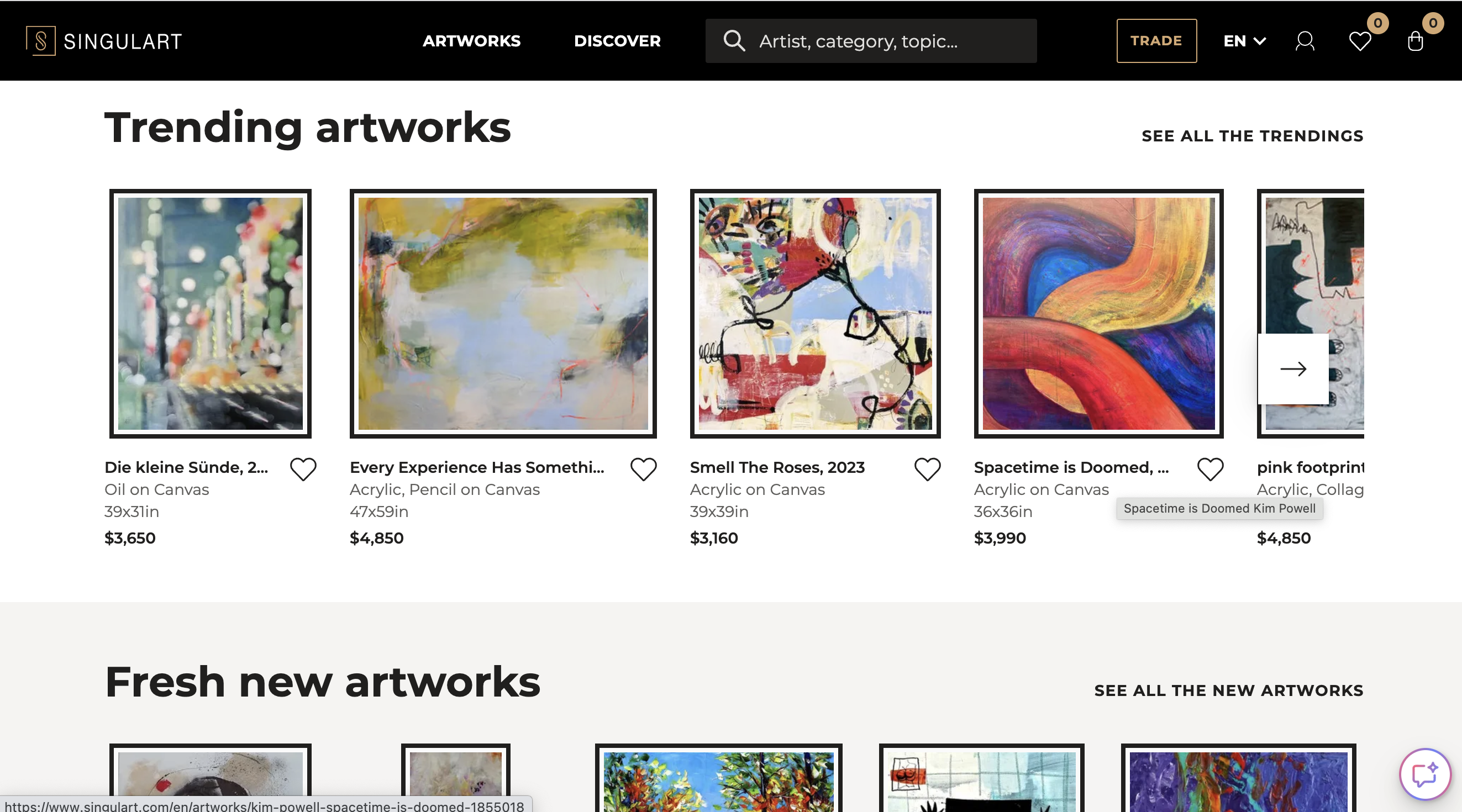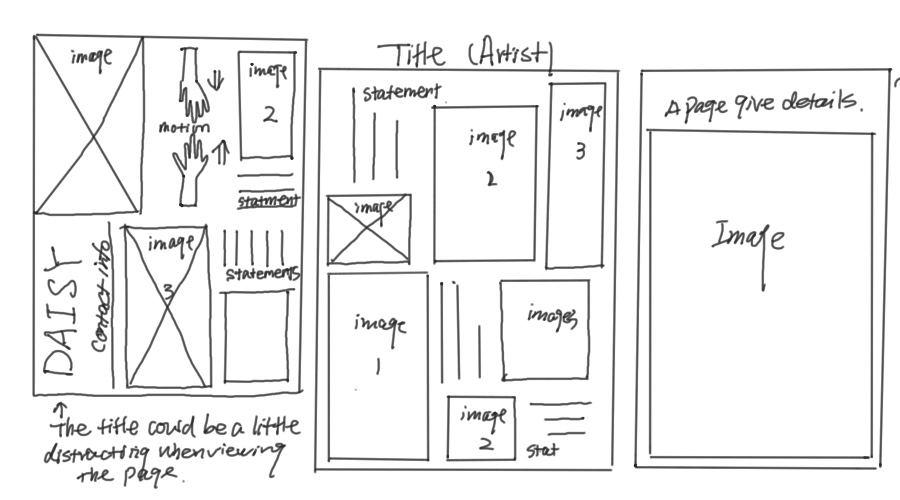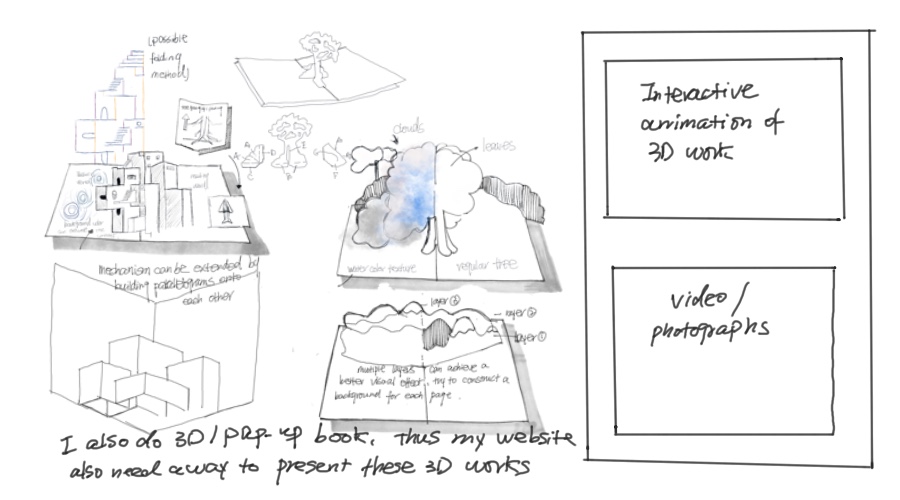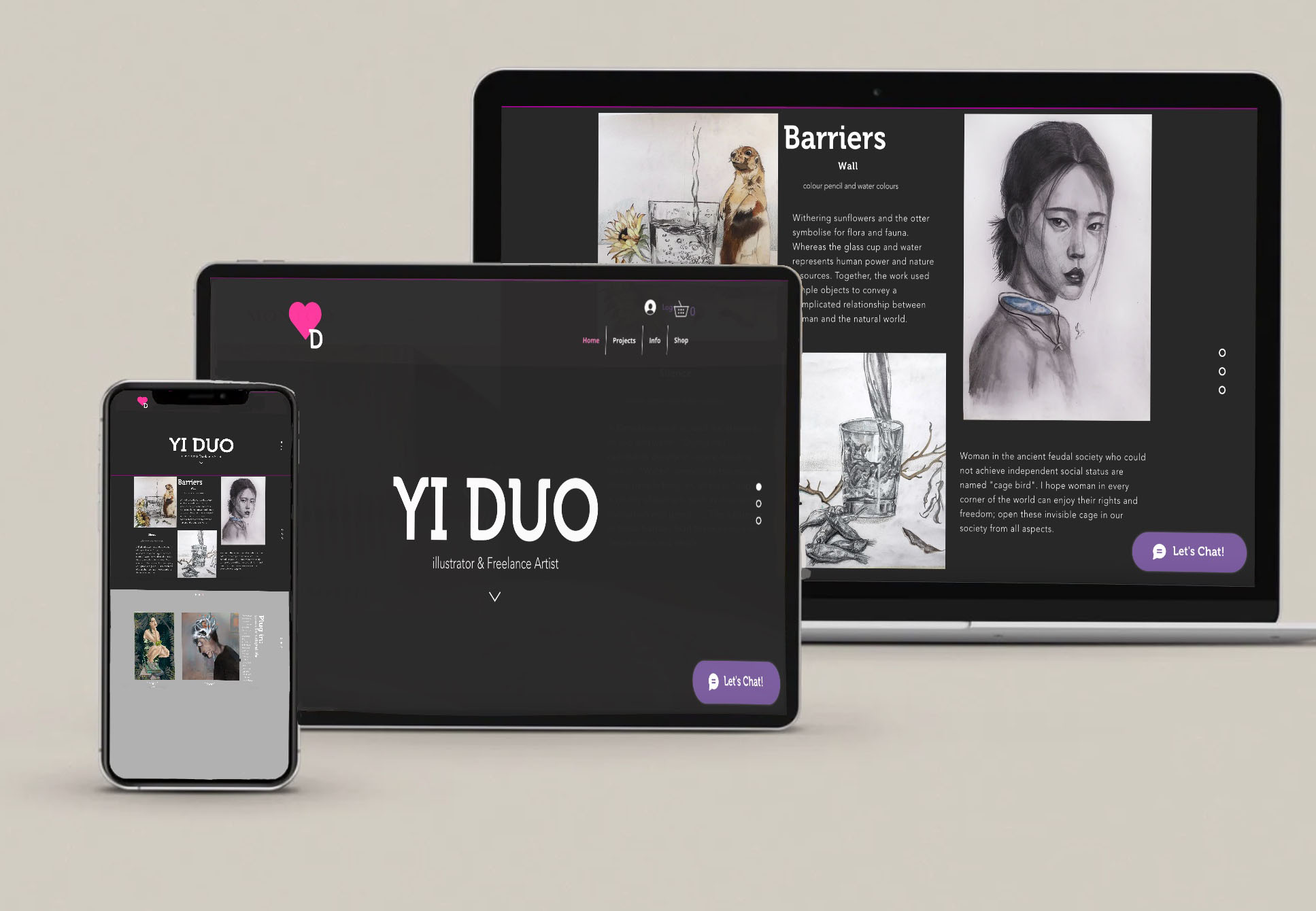Step 1 - Develop Your Idea
The goal of this website is to serve as an online portfolio where I, as an illustrator, can showcase my best work. It allows me to display a diverse range of illustrations, styles, and projects, providing potential clients and collaborators with a comprehensive view of my skills and capabilities. It serves as a centralized hub where people can learn about my work, contact me, and follow my creative journey. For future purposes of selling prints, merchandise, or digital assets, this website can serve as an e-commerce platform. It enables me to manage and sell my illustrations directly to customers. Last but not least, this website can facilitate networking and collaboration opportunities. I can use it to connect with other artists, writers, publishers, and potential clients in the industry.
Step 2 - Discovery and Research
I began by collecting various forms of websites that illustrators are often involved in, from individual to collaborative projects. Overall, there were plenty of illustrator websites that offer a seamless and visually captivating user experience, which can help attract and retain visitors, ultimately leading to increased engagement and potential client inquiries. To better understand them, I categorized my research into the following categories: Portfolio Websites, E-commerce Websites, Online Galleries, and Artist's Journals or Sketchbooks.
Portfolio Websites
A portfolio website is the most common type for illustrators. It showcases their best work, provides an overview, and gives details about their style, skills, and past projects. Miranda Sofroniou's website is a particularly noteworthy example of this. The page offers a whimsical exploration of sights and views from her travels around the world — from mountainside road trips to camel rides in desert dunes. The homepage of her illustration portfolio combines these very different locations into a thumbnail display.
E-Commerce Websites
If illustrators sell prints, merchandise, or digital assets, an e-commerce website allows them to manage inventory, process orders, and sell products directly to customers. Matt LeBlanc sells art at a wide range of price points for every type of collector, so when you mouse over “Shop Originals” you can choose the price range you’d like to see. There is also a separate tab for accessories. Items on sale are marked, and items that are sold out are also marked- which as mentioned above, increases the sense of scarcity. The prices are shown beneath each image, and when an item is on sale the price is slashed to indicate what a good deal the buyer is getting.
Amy Town, for instance, leaves images of work that have already been sold in her shop with an icon indicating that they're spoken for. This is an effective strategy for invoking a sense of scarcity and fear of missing out on potential collectors without being dramatic.

Online Galleries
An online gallery website is dedicated to displaying an illustrator's artwork exclusively. It provides a clean and focused presentation of their creations. I think it works in the same way as an e-commerce website; the only difference is that it is more friendly to fine art artists who want more public focus on the technique and concept of a certain art piece. It encourages appreciation more than selling the product.

Artist's Journals or Sketchbooks
A website that acts as a digital journal or sketchbook, showcasing rough sketches, doodles, and experimental work, can provide insight into the artist's creative process. These websites are a perfect place for people who work or are interested in the art industry to seek inspiration. Compared to the former, this kind of website serves the public more than the artist itself.
Step 3 - Target Your Audience
The targeted audience of my website is a diverse and multifaceted group. Primarily, potential clients and art directors seek out these websites to discover talented artists for commissioned projects, ranging from book covers to advertising campaigns. Publishers also explore my portfolios to find the perfect fit for their publications. Art collectors with an appreciation for unique styles may visit to acquire original pieces, while fellow artists often seek inspiration and knowledge exchange. Students and emerging illustrators can look to my websites for insights and guidance on navigating the industry. General art enthusiasts, art buyers, and creative professionals may visit to explore various artistic styles, purchase prints, or find collaborative opportunities. Event organizers, media outlets, bloggers, and industry insiders utilize this website for research, features, and exhibitions. In essence, my website serves as a dynamic hub that caters to the interests and needs of a wide-ranging audience within and beyond the realm of visual art.
Age Groups
My website may have a diverse range of targeted age groups, reflecting the versatility of my artwork and creative objectives. Primarily, illustrators cater to adult audiences interested in sophisticated, fine art pieces, editorial illustrations, or professional collaborations. Teenagers seeking inspiration for their artistic endeavors and young adult readers of graphic novels and illustrated books are also frequently targeted demographics. Illustrators specializing in children's book illustrations engage parents, educators, and young children as their audience. However. I aim for an all-ages appeal, offering a wide spectrum of artistry that resonates with both children and adults alike. Additionally, art students and aspiring artists of various age groups often flock to illustrator websites for guidance, tutorials, and industry insights. The age group targeted ultimately hinges on my style, niche, and the nature of my creative portfolio.
Step 4 - Inspiration

Nature often serves as a wellspring of inspiration, with websites showcasing flora, fauna, and landscapes captured in exquisite detail. Cultural influences, including folklore, mythology, and historical eras, infuse richness into illustration narratives. Personal experiences, travel adventures, and the diverse tapestry of life provide endless inspiration for storytelling through art. Contemporary issues, social commentary, and movements for change find their expressions on illustration websites, reflecting the ever-evolving nature of the art form. Collaboration and dialogue with fellow artists and creative communities fuel innovative concepts and techniques. Moreover, technology and digital tools continually inspire illustrators to push the boundaries of their craft, creating captivating and immersive online experiences. In essence, the wellspring of inspiration for illustration websites is as boundless and diverse as the artistic imagination itself.
Step 5 - Thumbnails



Step 6 - Wireframes

Step 7 - Responsive Mockup

Step 8 - Photoshop Comp
